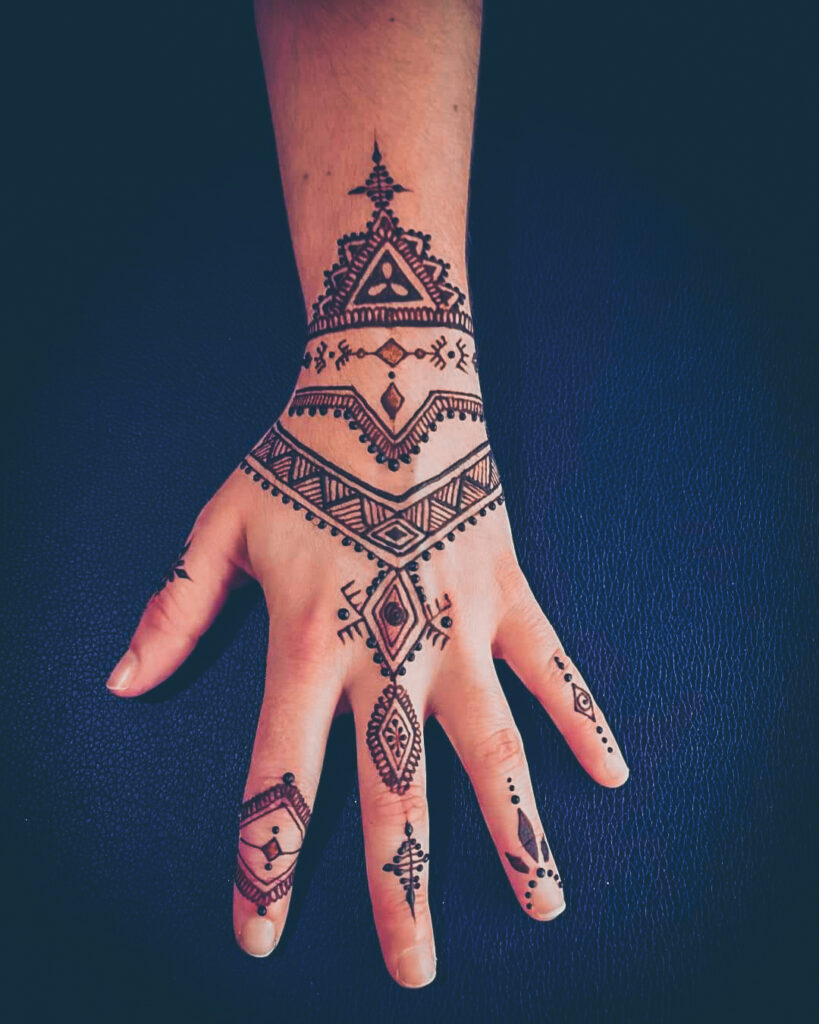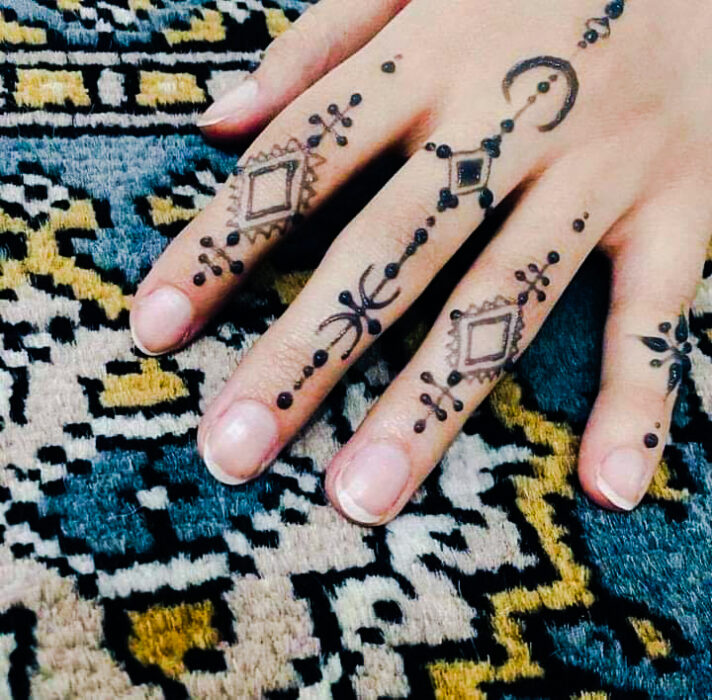Discover the cultural and symbolic meaning of henna in Amazigh (Berber) traditions in Morocco. Learn how henna is used for beauty, healing, weddings, and religious celebrations.
Henna in Amazigh (Berber) Culture: A Timeless Tradition
Henna holds a special place in Moroccan Amazigh culture. It’s more than just a natural dye—it’s a symbol of beauty, healing, blessings, and celebration.
Natural Beauty and Healing Properties
Henna is commonly used by Berber women to decorate their hands, feet, and hair. It’s not only admired for its decorative purpose but also for its many health benefits.
- Treats headaches and migraines
- Heals cracked heels and skin irritations
- Soothes dandruff and strengthens hair roots
- Natural alternative to chemical dyes
To color their hair, women mix henna with lemon juice, coffee, or egg whites. The result is a rich red tone and stronger, healthier hair.
Henna in Weddings and Celebrations
One of the most important uses of henna is during Berber weddings. The bride is adorned in traditional dress and decorated with henna by a woman called the nakfa, who specializes in bridal preparation.
This event is known as “Henna Night”, and it’s filled with:
- Traditional singing and dancing
- Joyful family gatherings
- Ritual coin tossing over henna plates (symbolizing good luck)
- Decorations using sugar and eggs (symbols of purity and blessings)
Henna is also present during the Aqeeqah, the celebration of a newborn’s birth, where both the mother and child are adorned with henna as a sign of happiness and protection.
Religious Occasions and Social Customs
Henna plays a strong role in religious and social events:
- During Eid al-Fitr and Eid al-Adha, girls and women wear decorative henna patterns.
- Some families decorate the forehead of the Eid ram with henna for good luck.
- In certain regions, female guests are honored with a henna session before leaving, as a gesture of hospitality.
Beliefs and Symbolism Around Henna
Henna is also linked to various traditional beliefs in Berber communities:
- Skipping henna on a bride’s wedding night is seen as a bad omen.
- Girls seeking marriage may wear henna in necklace form.
- Henna is thought to soften the heart and bring kindness.
- Some people believe sitting under a henna tree at night invites jinn (spirits).
These stories reflect the deep spiritual and symbolic place henna holds in Amazigh life.
A Modern Symbol of Expression
Henna today is not limited to older generations. Young women and teenage girls use henna as a form of self-expression. From traditional patterns to modern henna tattoos on arms, ankles, or backs—henna has evolved with time while staying rooted in culture.

Henna in Amazigh (Berber) culture is more than a decorative art—it’s a meaningful tradition, a connection to heritage, and a beautiful expression of life’s special moments. Whether during weddings, births, or holidays, henna continues to color the lives and stories of Moroccan families.
Morocco Sahara Desert Tours is a locally-owned travel company offering unforgettable desert tours and cultural experiences across Morocco. We specialize in authentic adventures guided by native Berber guides who share their deep knowledge and traditions. From camel treks and luxury desert camps to exploring historic cities and Berber villages, we provide personalized, immersive journeys into the heart of Moroccan culture.

